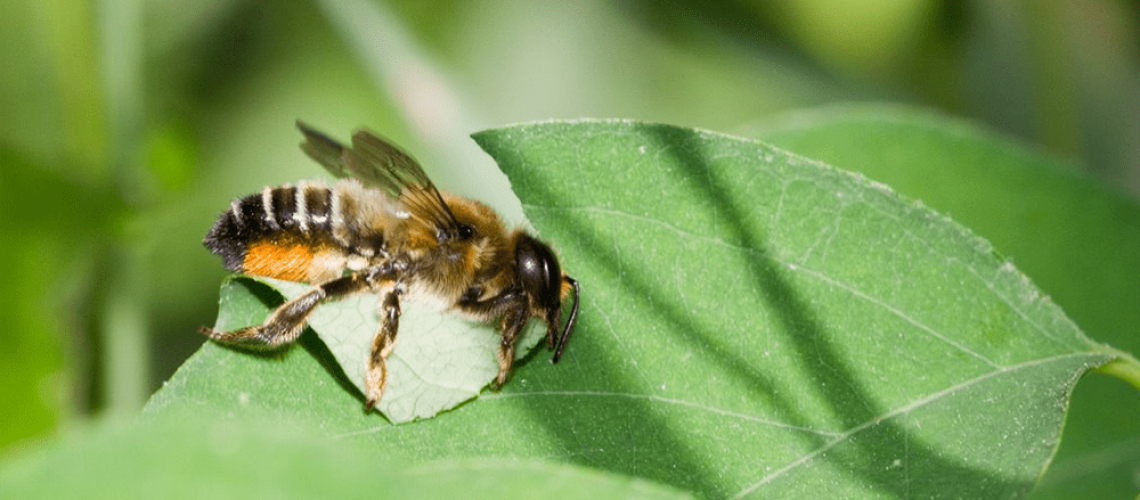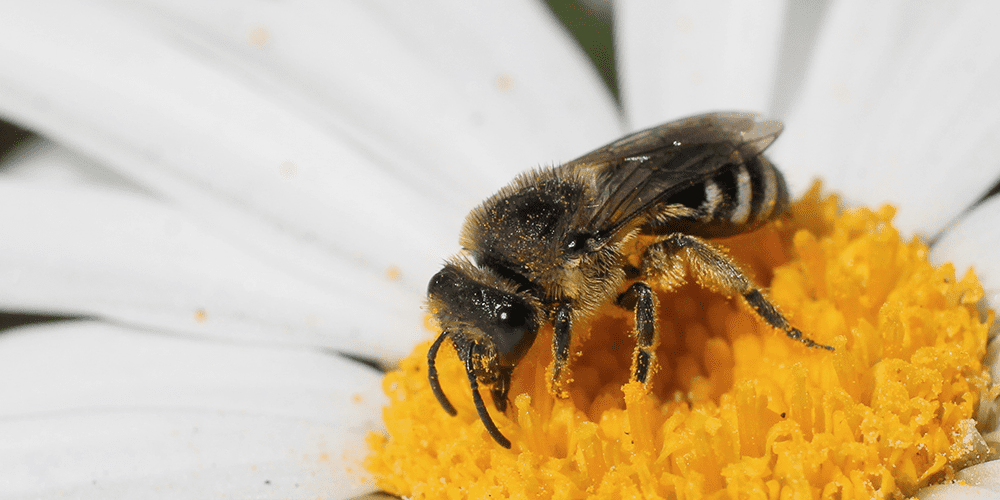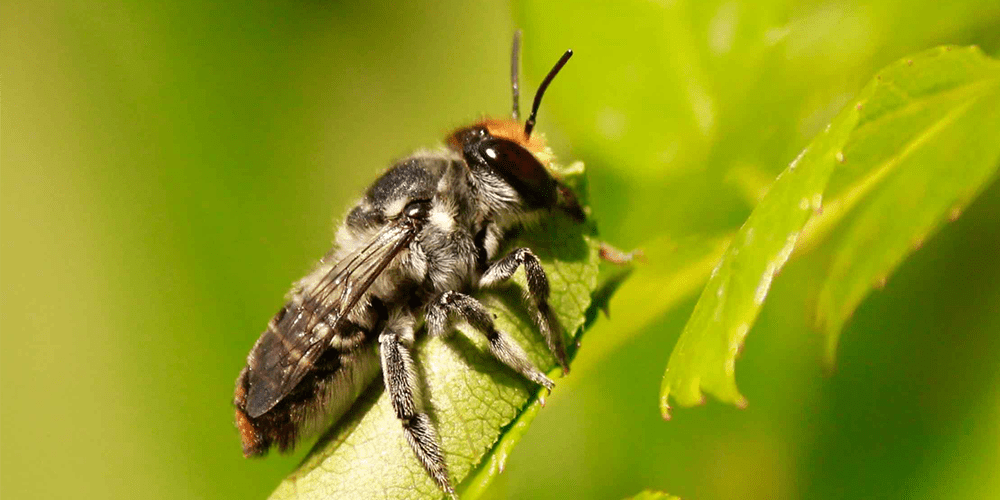- SHOP ONLINE
- AT THE GARDEN CENTRE
- BE INSPIRED
- LANDSCAPE SOLUTIONS
- EMPLOYMENT
- ABOUT US
Menu
- SHOP ONLINE
- AT THE GARDEN CENTRE
- BE INSPIRED
- LANDSCAPE SOLUTIONS
- EMPLOYMENT
- ABOUT US

As gardeners, we spend a lot of time thinking about pests. With so many farms and gardens around the Guelph area, there are plenty of nasties around to ruin our day. What I don’t hear about enough are the garden heroes. The small-yet-mighty bugs who work beside us, not against us. One such micro-superhero is the leafcutter bee.
Leafcutter bees are identifiable by their black bodies and very faint yellow stripes. Compared to the cute & fuzzy honey bee, leafcutters are a bit slimmer with shorter hair. On looks alone, you might expect them to be a more aggressive bee species than the honey bee. However, if I may jumble two clichés together, you can’t judge a bee by its bonnet. Leafcutter bees are very docile and don’t mind sharing the garden with you.

The temperament of the leafcutter bee is only one reason to love them. Here’s why every gardener in Guelph should fall in love with them:
They are solitary. While the drones of a honey bee hive all work to protect and nurture their queen, the leafcutter bee is a solo agent. These independent bees have no hive to guard, so they have no reason to become aggressive.
They are amazing pollinators. Honey bees carry pollen by moistening it and sticking it to their rear legs to carry back to the hive. Leafcutter bees have a much simpler method; the female bee will just let the pollen stick to the little hairs on her abdomen. Not only does the pollen get transferred easily between the flowers she visits, but she also loses some in flight. This allows the pollen to spread to lots of flowers in a very short time.
It’s safe and easy to raise them. Leafcutters don’t need a fancy place to hang their hat. As long as they can find a tunnel or some soft wood to dig out, they’ll happily make their nests.

Female leafcutters nest by finding cavities with about 4 to 8 inches of depth, lining them with bits of leaves, and laying a single egg into each cavity before refilling them with more bits of leaves and pollen to feed her larvae with. The larvae develop in the cavity and emerge as adult bees the following spring.
The male leafcutter bee only has one thing on his mind. After he emerges in the spring, he finds a female to mate with. He is then effectively retired and dies within two weeks.
Female leaf cutters, on the other hand, hold down several jobs. They hunt for pollen, scout out a nesting spot, furnish it, lay an egg, leave some food in the fridge, and then ride off into the sunset. The total lifespan of the adult female is about 5-6 weeks.
Leafcutters need mid to high temperatures to get to work, so they will be their busiest right about now in the season—when temperatures here in Guelph are reaching about 25-30 degrees. Essentially, when the weather gets too warm for our mason bee friends, that’s when the leafcutters will come in to pick up where they left off!

Like other bees, leafcutters are drawn to pollen-heavy flowers. However, to get them to stick around, you’ll want to offer them a perfect spot to build their nests.
We carry leafcutter bee houses at Royal City Nursery that you can place near your flower garden. Leafcutter bees are opportunists, and you might be surprised how quickly you find the cells filling up with leafy bits!
Even though they don’t live in a hive, the leafcutter still has a sense of community. Like mason bees, leafcutters are solitary, but like to use the same little nest blocks throughout the season—sort of like a bee condominium complex.
However, things can change if the leafcutter condo is at full vacancy. A desperate leafcutter that can’t find her own cavity nearby will waste no time excavating another bee’s nest to park her own pollen collection. Good manners are important, but much less important than survival.
When it’s time to settle in for the season, leafcutters will also create a cocoon like their mason cousins. Instead of mud, though, they’ll use bits of leaves to create their safe sleeping place. In order to make them, they’ll need to get their leaf matter from somewhere, so if you find yourself waking up to leaves with small holes in them, just remember you’re housing some very important guests!
In Guelph, we’re lucky to have strong populations of these mighty little bees. However, with so many threats to pollinator populations these days, it’s up to us to help keep it that way. While to you it may not be much trouble to place a leafcutter bee house or two in your yard, just one bee nest does a world of good for the gardens in your community.
HOURS
JOIN US YEAR-ROUND!
Hours of Inspiration
Monday to Friday: 9am – 6pm
Saturday: 9am – 5pm
Sunday: 10am – 5pm
BE INSPIRED
Sign up for our E-Newsletter to receive garden tips, landscaping advice and more, delivered right to your inbox.
Sign up today!
Find Us